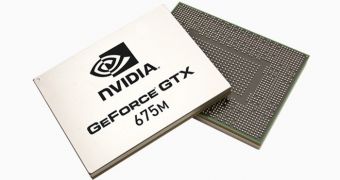With all the new CPUs with integrated graphics from Intel, and AMD's accelerated processing units (APUs), one would think the third quarter would be a contest between them in regard to how many graphics solutions sold.
This is not so. NVIDIA is the one with a reason to be smug, even though the entry-level add-in graphics card market is all but gone, and despite not having any CPUs with integrated graphics besides the Tegra series (which really only shows up in tablets).
Other than x86-based ones, Tablets were not taken into account by Jon Peddie Research (JPR) when it checked to see how many graphics products shipped between July and September. The same goes for smartbooks and ARM-based servers.
Thus, by all intents and purposes, what we have here is a study of the PC graphics market with AMD and Intel-based slates as an accessory.
This might be viewed as a disadvantage to NVIDIA, which makes the situation all the more ironic, since the Santa Clara, California-based company is the one that did best in Q3 2012.
While AMD dropped 10.7% and Intel fell 8% compared to the second quarter, NVIDIA's overall PC graphics shipments went up by almost 20% (19.6% to be exact).
The year-to-year evolution showed a decline for all three, but while AMD's and Intel's camps suffered the worst (20% and 14%, respectively), NVIDIA got away with 0.5%.
Sadly, or fortunately, depending on one's view, none of this is enough to change the ranks: Intel is still in the lead, followed by AMD and NVIDIA.
Intel shipped 71.75 million units, giving it a share of 59.8%. AMD sold 25.43 million, leaving it with 21.2%. That leaves NVIDIA with 22.25 million, or 18.5%. Had Tegra sales been taken into account, the numbers would have been very different.
Overall, the PC graphics market slipped by 4.3% in the third quarter of 2012.

 14 DAY TRIAL //
14 DAY TRIAL //